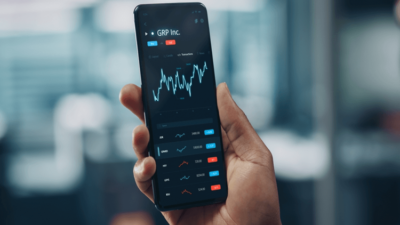With significant improvements and technological advancements, health services are becoming more expensive. And the high costs are hurting the underprivileged communities. Unsurprisingly, healthcare inequality exists in every economy because it is only available to people who can afford to pay for it. As a result, many people skip treatments and medicines until they end up in the emergency room.
Low-income neighborhoods don’t have access to hospitals, medical technology, and qualified doctors. Simultaneously, health insurance companies are raising deductible and copayments, creating more barriers for underprivileged people. Although governments take measures to make healthcare more equal, it fails to accommodate every individual. In the 21st century, millennials are trying to bridge these inequality gaps by taking meaningful initiatives.
You can join hands with the federal government to launch universal health programs. Otherwise, you can devise new policies and regulations to facilitate needy communities. If you are clueless about it, have a look below. Here are five ways to safeguard the health of underprivileged communities.
Table of Contents
1. Offer Preferential Drug Pricing
The escalating costs of medicines are increasing the burden on people. Some people are skipping medications, while others reduce the dosage, opening doors to substantial health concerns. Public health experts can join hands with pharmaceutical companies to offer preferential drug prices. It means underprivileged communities can purchase drugs at affordable rates. Moreover, if the prices fall below the cost, encourage the government to subsidize the pharmaceutical sector.
Undoubtedly, there is a lot you can do to improve healthcare accessibility. But firstly, it is essential to prove that you are the right person for the job. You might have the best ideas and fantastic solutions, but it won’t count without the expertise and professional qualification. Therefore, consider completing an online master’s public health to understand divided healthcare facilities better. You will also learn about new initiatives like preferential drug pricing to ease health burdens.
2. Host Pop-Up Clinics
Unfortunately, there are hardly any hospitals and clinics in rural areas, especially those in developing countries. People don’t have access to standard blood pressure and sugar machines, leading to poor health conditions. Therefore, consider hosting pop-up clinics once or twice a year in such areas. These clinics rely on volunteer clinicians to provide care.
You can set up preventive screenings, blood test kits, and routine tests to accommodate a high volume of patients in a short time. Alongside meeting immediate healthcare needs, you can identify patients suffering from chronic illnesses and life-threatening diseases. Connect them to disease management services and help them live longer. Such pop-up clinics can make a difference in many lives as it safeguards their health while teaching them preventive measures.
3. Initiate Awareness Programs
In developing countries, people are living below the poverty line. They don’t have access to clean water, electricity, and other significant resources. As a result, underprivileged communities are clueless about rising health concerns. You can take the responsibility of starting awareness campaigns for these communities. Firstly, address the malnutrition concerns and distribute resources to combat this problem.
Nutritional awareness strengthens the immune system while reducing the risk of germs and diseases. Moreover, educate them about family planning programs as an increasing population is another concern for the healthcare industry. It reduces the threat of HIV/AIDS and improves maternal health. These programs promote awareness amongst people, allowing underprivileged communities to prioritize their health.
4. Free Immunization
Every newborn goes through a long-vaccination process since it prevents disease and mortality. However, underprivileged communities can’t afford to pay for these vaccines due to which child survival rates are low in rural areas. Alongside high immunization costs, the limited clinic hours for immunization also halt access. Hence, consider offering free vaccines for malaria, hepatitis, polio, and other diseases to newborn babies.
However, vaccines are pretty expensive, and if you want to offer it for free, you need loads of money. Either start a fund-raising campaign or collaborate with state health departments. In the United States, many states provide no-cost vaccines to children who don’t have health insurance. Moreover, educate the parents about childhood immunizations as they have unreasonable fears regarding vaccine safety. Offer convenient office hours and supportive staff to reduce infant mortality rates.
5. Use Mobile Clinics in Rural Areas
Unfortunately, public health experts don’t have enough resources to build hospitals or clinics for underprivileged communities. So, how about you use mobile clinics? It provides primary and preventive care services from a van, truck, or bus. You can equip these vehicles with all the necessary technologies to provide clinical services in rural areas.
Either request practitioners to volunteer or hire some nurses and doctors who are willing to travel. You can place the mobile clinic for some days in different areas, allowing you to cover multiple locations. If you see the stats, approximately 700 mobile health clinics are operating in America. It is significantly reducing emergency room visits while combating common health issues.
Wrapping Up,
Employment status, income level, education, and financial stability can influence the health of a person. It is one of the reasons for wide disparities in health status and accessibility for various social groups. Underprivileged communities cannot afford to cough up money on healthcare, making them suffer. Honestly, healthcare is not a luxury; it comes under one of the basic human needs. As a result, public health experts are stepping ahead and deploying measures to safeguard these communities’ health.













Comments